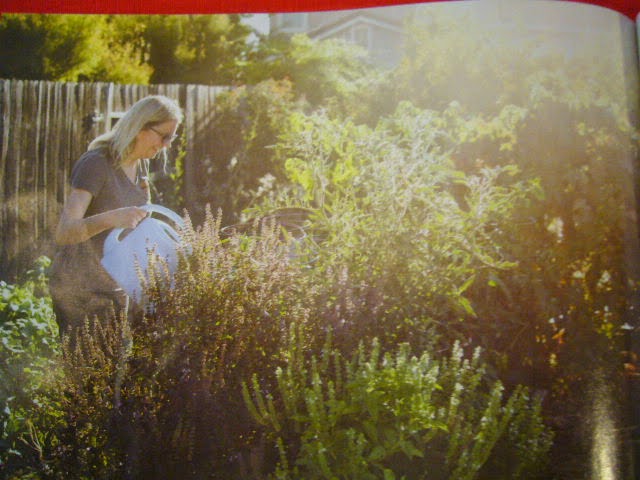 |
| Flavor Finale Pluots-Bird Back 40 |
I've been waiting for this moment to be brutally honest. I've been waiting for a harvest like you. Because the planting and growing of fruit trees is an exercise in patience. You are not going to be rewarded with a bounty of fresh fruit in the first year nor the second. The third year might give you a little something. But it's that fourth year that fruit growers really look forward too.
Why that fourth year? Because as you've dutifully tended, watered and fertilized your young fruit and citrus trees, you have given them the time they need to establish large and strong root systems below the soil line. Strong roots = strong trees. Strong trees = a bounty of fresh fruit come harvest time.
 |
| Sliced Flavor Finale Pluots |
But, alas, it doesn't always work this way. Sometimes the fourth year is a bust. The fifth year can be disappointing as well. Sometimes -- it's the third year. It all depends upon the fruit tree in question, where it's planted, how much sunshine it receives and how well you've cared for it. Did disease hit at some point? What about bugs? Bugs love fruit trees just as much as I do.
But there comes that moment in time, where the harvest you've worked and waited for finally arrives. You can't taste it yet. But you can see it forming before your eyes. In my case? The Flavor Finale Pluot tree that I stuck in the ground five years ago finally got around to delivering the type of harvest that I had always dreamed about, but never quite attained.
 |
| WHOA! Now that's a harvest to remember! |
What is that perfect harvest? It's a harvest that is so large, that one bathes in pluots. There's enough pluots on the tree for fresh eating. There's enough pluots on that tree to make loads and loads of pluot jam and other pluot goodies. Gin drinks made with freshly squeezed pluot juice anyone? Finally -- there's still enough to give away to family, friends and neighbors -- all they can take -- and there's still enough fruit left on the tree to feed a marauding family of mockingbirds.
That, my friends, is a harvest to remember. And it took place this year in the Bird Back 40 in what will be described as an "average" fruit year by many. The weather wasn't quite right for cherries in Northern California this year, which is why the purchase of 1 lb. of cherries cost an arm and a leg in the local supermarket. Some peach varieties -- like the June Pride for example -- set very little fruit. And the three nectarine trees delivered a smattering of fresh nectarines. And don't get me started on the apples and pears -- especially when it comes to a rather nasty bug like fire blight.
 |
| Flavor Finale Pluot Tree-Bird Back 40 |
This wasn't what I had expected. But if you grow fruit for fun, you take the good with the bad. In some years the times are good. In others? Not so much. That's when it's time to drag out the old farmer's lament of "there's always next year."
But -- as you might be able to notice in the photo above left --there's a bit of wood propping up a branch laden with pluots. Know what that means? It was a rather right fine year for pluot production. More than right fine I should say. The dang tree was loaded to the point where some unpropped branches did actually snap under the weight of a terrifically large and luscious pluot crop.
 |
| Flavor Finale Pluot Jam-Bird Kitchens |
I'll be completely honest with you. I've been privy to pluots ever since I first discovered them at a Sacramento area farmer's market more than a decade ago. I've always been a fan of home-grown plums and not-yet-dried prunes like the Clairac Mammoth de Ente (Improved French Prune). But the pluot offered a tasty feast that I quickly fell in love with. I couldn't buy enough to meet my personal demand. And I knew, fairly early on during the Bird Back 40 landscaping process, that a pluot tree would find its way home. I just wasn't sure which one it would be.
It would be November 19th, 2009 where I would conspire with another Sacramento area gardener and blogger (two of them actually) and place a large order through Bay Laurel Nursery. That order consisted of table grapes, thornless boysenberry and blackberry vines and one Flavor Finale Pluot tree. Why the Flavor Finale? Good question! You think I remember after five years of hitting hard gin like that?
 |
| Pluots... |
Actually -- I did know that the Flavor Finale had recently won a Dave Wilson Nursery taste test challenge. And the fact that it ripened late -- in September no less -- was another good call. When one chooses to grow fruit trees -- you don't want everything ripening up in August. I would come to find out later that grafting different plum and pluot varieties onto the Flavor Finale was like falling off a log. If there is every such a thing known as the "Franken Fruit Tree" in the Bird Back 40, it's the Flavor Finale Pluot.
My thanks to the wonderful and wacky mind of Floyd Zaiger and his Zaiger Genetics program. Without his wonderful invention called the pluot, the first of which was introduced under the name of Flavor Supreme in 1988, my Flavor Finale harvest to remember would never had taken place.
















